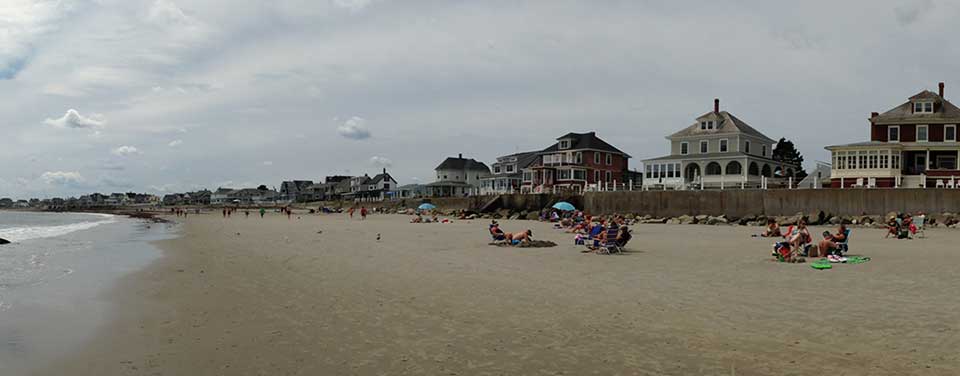What is shoreline armoring?
"Armoring" is the practice of using physical structures to protect shorelines from coastal erosion.

Shoreline armoring along Wells Beach, Maine. Coastal managers and property owners often attempt to stabilize coastal land and protect residential and commercial infrastructure along the coast by building shoreline armoring structures to hold back the sea and prevent the loss of sediment.
Coastal erosion—the loss of shoreline sediment - is a complex process that continuously reshapes the shoreline and can threaten coastal property. With approximately 350,000 structures located within 500 feet of the nation’s shoreline, erosion is a problem many U.S. coastal communities must address.
Coastal managers and property owners often attempt to stabilize coastal land and protect residential and commercial infrastructure along the coast by building shoreline armoring structures to hold back the sea and prevent the loss of sediment. Examples of such structures are seawalls, breakwaters, and riprap.
Shoreline armoring has both beneficial and detrimental effects. Armored shorelines can prevent sandy beaches, wetlands, and other intertidal areas from moving inland as the land erodes or sea levels rise, but they also have the potential to eliminate habitat for marine organisms and beach front for the public by restricting the natural movement of sediments. The key to shoreline stabilization, if it is required, is to use a site-specific stabilization method that balances the needs of the public and the needs of the natural system.
While coastal erosion is a natural process, the rate of erosion can be greatly influenced by human activities. Natural factors that contribute to erosion include sediment supply; geologic characteristics; changes in sea level; and the effects of waves, currents, tides, and wind—all of which vary by location. Human activities that can alter natural shoreline processes include beach nourishment (adding sand), dredging of ports and coastal approaches, construction of harbors and sediment-trapping dams, and the use of shoreline armor.
Search Our Facts
Get Social
More Information
Last updated: 06/16/24
Author: NOAA
How to cite this article